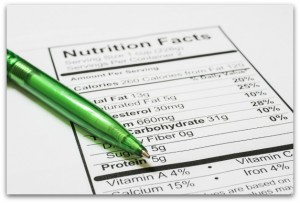Uncle John knows pretty much everything—and if he doesn’t, he heads his massive research library, or puts one of his many associates on the case. So go ahead: In the comments below, ask Uncle John anything. (And if we answer your question sometime, we’ll send you a free book!) Today’s question comes from reader Vicky W., who asks…
How do food makers determine the calorie counts placed on food packages?

A calorie is a measurement of energy, and it is the equivalent of 1,000 kilocalories. What’s a kilocalorie? A very tiny unit of energy, and it’s how much energy is required to raise a kilogram of water by 1 degree Celsius.
Kilocalories, and calories, were once determined by burning food. Technicians in labs at food packagers and manufacturers would place a food in a device called a bomb calorimeter: a sealed chamber in which the food item in question was surrounded by another chamber that was filled with water. The food was then completely burned and the rise in water temperature noted. A little simple arithmetic later, and the caloric content of the food was known.
Since 1990, however, things work a little differently. That year the government passed the Nutrition Labeling and Education Act, which sought to make information about the nutritional content of food more accessible and uniform. As such, the caloric counts on food labels are now calculated from the estimated nutritional makeup of the food, and not by burning the food and seeing what it does to water.
All the ingredients in a packaged food are tallied, and then scientists break down the food into its nutritional components: protein, carbohydrates, and fat. Based on years of calculating caloric information left the scientific world with data on the caloric values of these things, which are now averaged: a gram of protein contains 4 kcals, a gram of carbs has 4 kcals, and a gram of fat contains 9 kcals.
This is how a candy bar manufacturer, then, would determine how many calories are in a chocolate bar. It’s got 3 grams of protein, 30 grams of carbs, and 10 grams of fat. That amounts to 12 calories from protein, 120 from carbohydrates, and 90 from fat. Total calories: 222.







